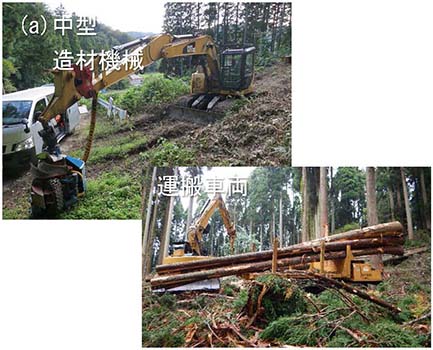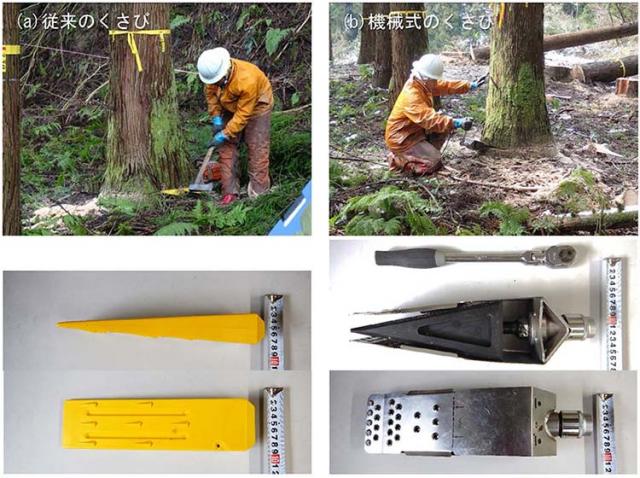Home > Research > Research Results > Research Results 2020 > Improved logging system for long, large-diameter trees in planted forests
Update:April 10, 2020
Main content starts here.
Improved logging system for long, large-diameter trees in planted forests
| Article title |
Productivity of logging large diameter logs and long logs during final cutting in a mountain forest in Japan |
|---|---|
| Author (affiliation) |
Masahiko Nakazawa (a), Chikashi Yoshida (a), Tatsuya Sasaki (a), Seishiro Taki (a), Takumi Uemura (a), Takayuki Ito (a), Hirokazu Yamaguchi (a), Masahiro Mozuna (a), Kengo Usui (a), Yuta Inomata (a), Hidenori Suzuki (a), Satoshi Yamaguchi (a), Hiroko Muneoka (a), Yoshiaki Tanaka (a), Masaki Jinkawa (b), Kotaro Zushi (c), Hideharu Aiura (c) (a) Department of Forest Engineering, FFPRI, Tsukuba, Ibaraki, Japan. (b) Kyushu Research Center, FFPRI, Kumamoto, Japan. (c) Toyama Prefectural Agricultural, Forestry & Fisheries Research Center, Tateyama, Toyama, Japan. |
| Publication Journal |
International Journal of Forest Engineering, April 2019 DOI:10.1080/14942119.2019.1599225( External link ) |
| Content introduction |
More than half of the planted forests in Japan have reached maturity, being older than 50 years. It is necessary to systematically cut and use these aging large-diameter trees. As its range of possible applications increases, demand for timber that is 6–8 m or more in length (rather than the usual 4 m) is expected to increase. Therefore, in the present study, we processed logs of different lengths (4 m, 6 m, and 8 m) from Japanese cedar stands of large-diameter trees (DBH < 40 cm ) using differently sized machines (currently used and larger-sized) and evaluated the productivities resulting from their use. Consequently, we found that high productivity was maintained with a larger machine system (16 t harvester and 6 t maximum load forwarder) regardless of material length, and that the productivity of long logs was reduced with the smaller machine system currently used (13 t harvester and 4 t maximum load forwarder). In addition, mechanical wedges driven by ratchets are popular in Central Europe for cutting large-diameter trees. In the present study, we used and evaluated this method for the first time to our knowledge in Japan. Consequently, we found that the productivity of felling is slightly lower using this technique than when a normal wedge hit with a hand axe is used, but safety is improved due to reduced workload using the mechanical method. Our results may contribute to the promotion of systematic logging and utilization of aged forests as well as in providing a stable supply of long logs.
Photo1: (a) Working system using current size machines and (b) larger-sized machines. “Current size” refers to the machines generally used today in Japan, while “larger-sized” machines are the largest that can be used in Japanese working conditions. When an 8 m log is loaded in the current size forwarder, it becomes unstable; however, with a larger-sized forwarder, it is stable. The same tendency was observed in harvesters.
Photo 2: Felling using a normal wedge hit with a hand axe (a) and a mechanical wedge driven by a ratchet (b). In the normal wedge hit with a hand axe method, we hit the tree with a hatchet. The impact of this method on the body is considerable. In addition, this method is dangerous, as when trees were felled uphill toward the strip road, the worker must cut below standing trees.Because the mechanical wedge is inserted from the side of standing trees while being rotated by the ratchet handle, it is safe and requires less labor. |
Copyright © Forest Research and Management Organization. All rights reserved.



